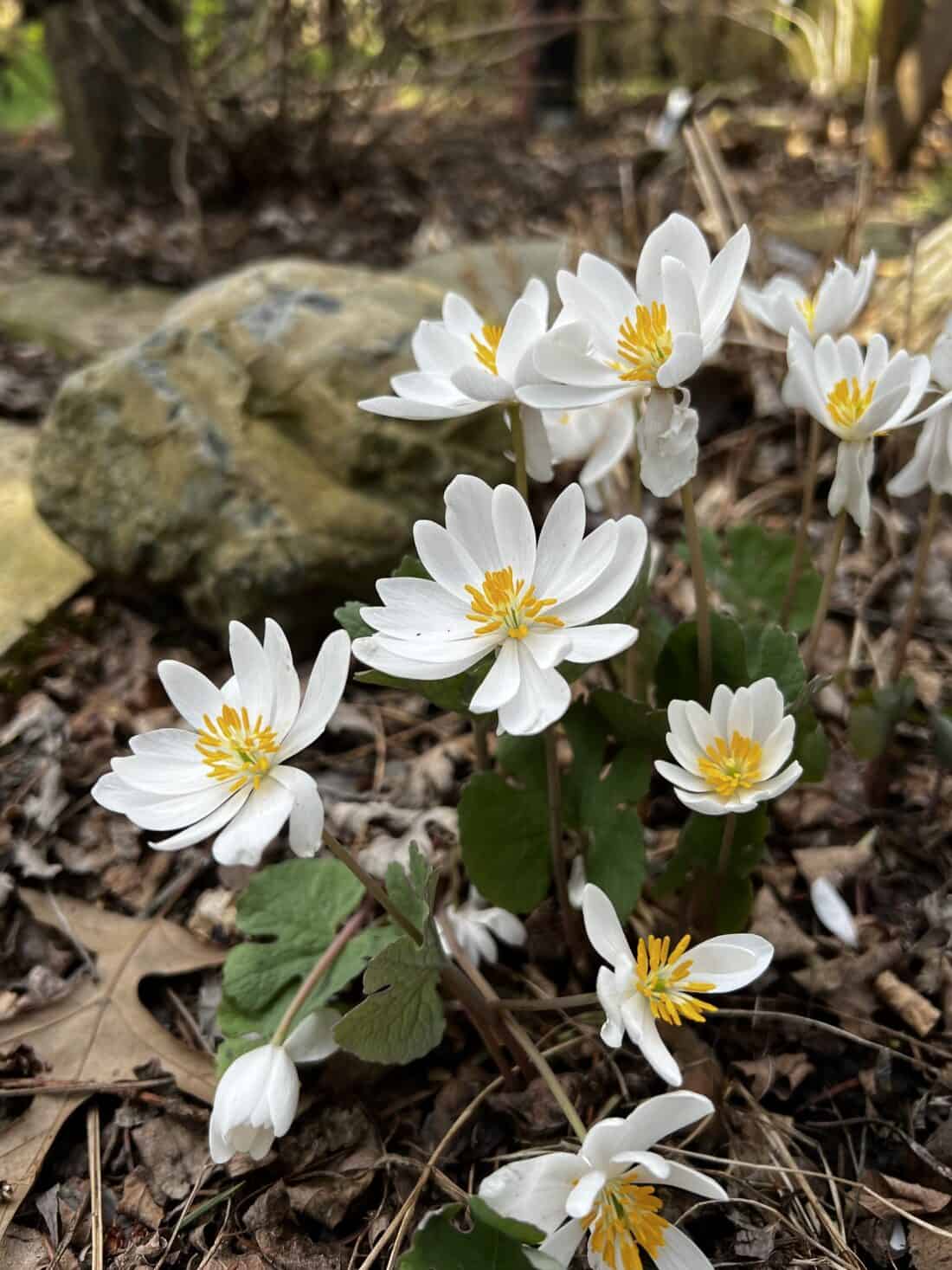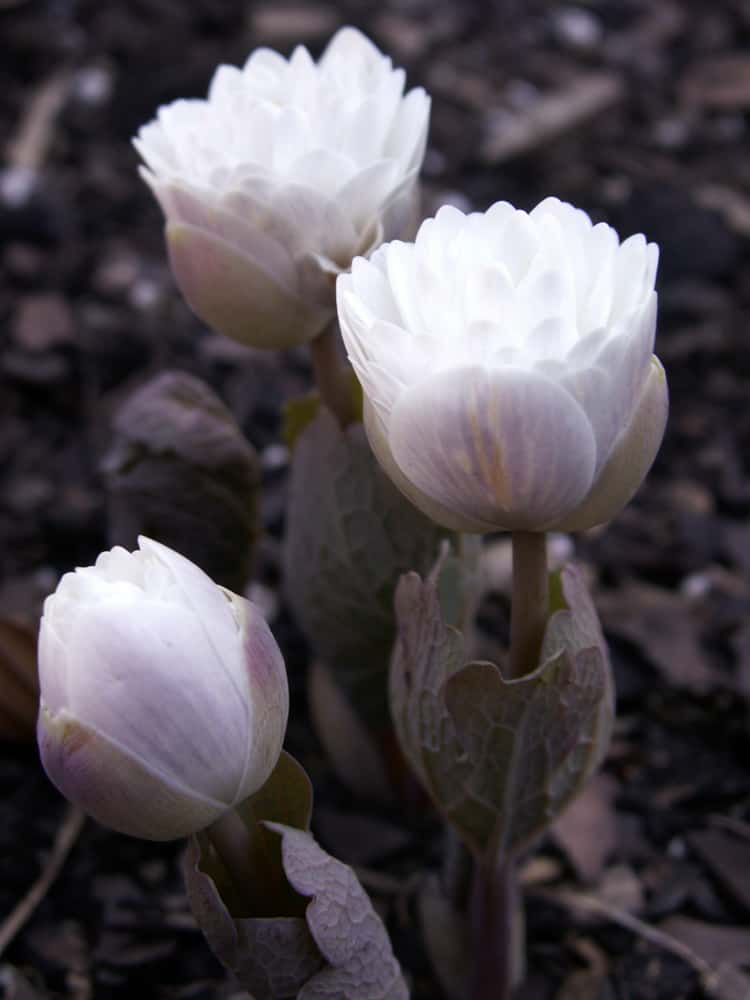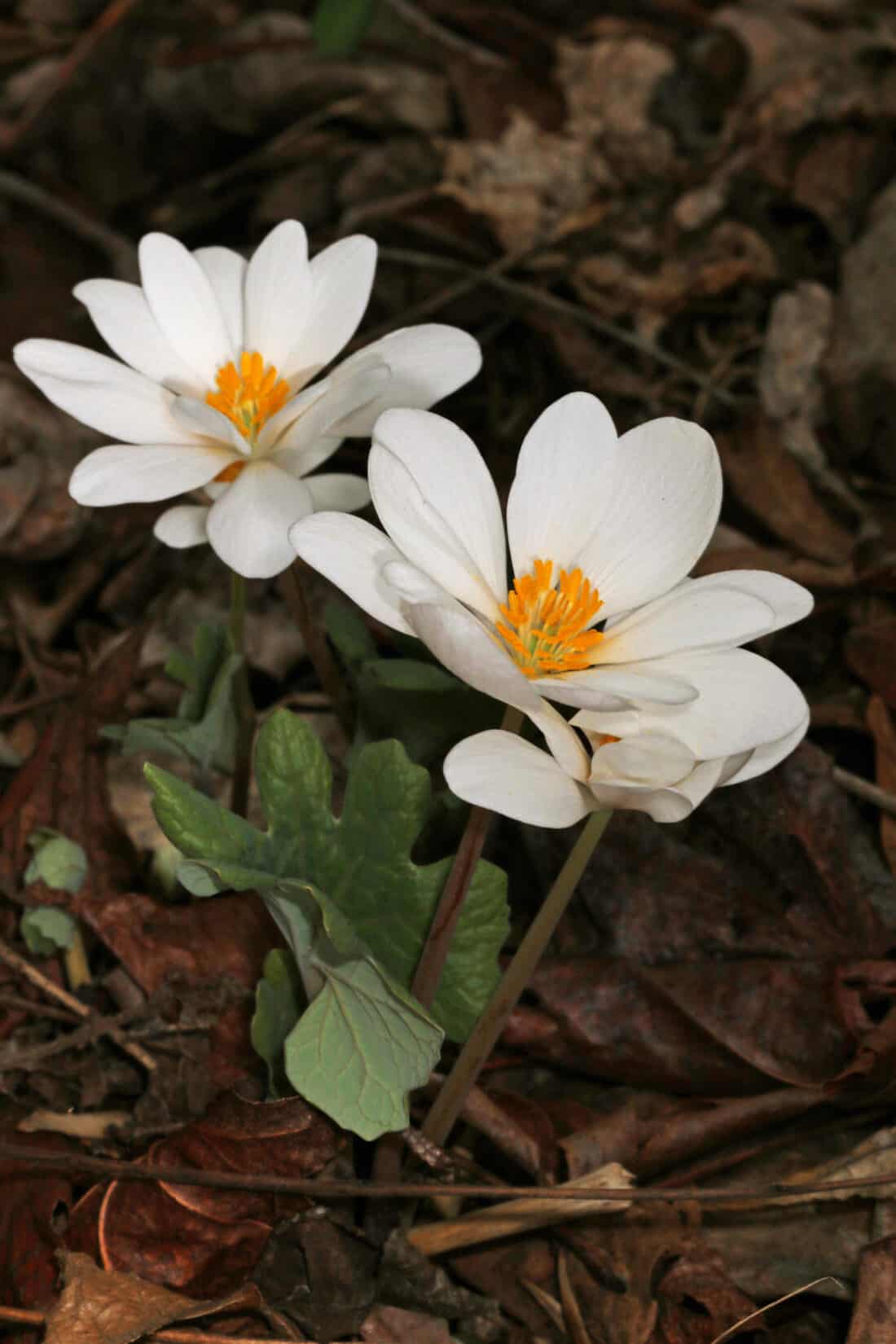It is late May here in Maine, and we are in the midst of a long, cool spring that favors early spring ephemerals like Bloodroot. The temperatures have only risen above 70 degrees a couple of times, which has prolonged spring. Our tulips are still in flower as we are about to flip the calendar forward to June. Hopefully, soon, the 70 and 80-degree days will be commonplace, and summer colors will dominate the landscape for months.

are considered spring ephemerals – which are plants that produce leaves, flowers, stems, and fruits in one growing season (in this case, spring) and then go dormant until the next spring season. Image by Ron Frazier
I am not complaining about the cool spring. I spent 28 years growing up in North Carolina with many sleepless nights because the temperatures never went below the mid-eighties. Along with that heat, we never truly enjoyed the spring colors provided by tulips and other ephemeral spring plants.
One of these ephemeral spring plants that has really caught my fancy this spring is bloodroot or Sanguinaria canadensis.
Where does Bloodroot grow?
Bloodroot grows in most areas of North America east of the Rockies, but I never encountered it until we lived in Pennsylvania. This small woodland gem can be found sporadically in old woodlands. Bloodroot does not like to grow on disturbed sites, and I am told it can be difficult to transplant.
About Growing Sanguinaria canadensis
I asked Peter Beckford from Rebel Hill Farms in Clifton, Maine, about the best way to grow Sanguinaria canadensis. Peter recommends collecting bloodroot seeds as soon as it is ripe and sowing immediately. He has an outdoor seed bed where he sows the seed directly. It takes about a year for the seed to germinate into new seedlings.

Can you transplant Bloodroot? (a note from Rochelle in 2023)
Rodney mentions that bloodroot has a reputation for being difficult to transplant. But I haven’t experienced that at all. I have grown it for years. I started from a small plant – which was really no more than a piece of root, with a single node of a future leaf stem.
It took immediately and has since thrived in my garden. Over the years, A small clump will get bigger and wider and form large colonies. As my plants have spread out, I have split and transplanted them around my garden – always with great success. I have never tried the seed method and have opted instead for planting bare root plant offshoots that I take by rhizome division.
The roots remind me a little of irises – if you have a large clump and you dig them, each underground stem will tend to break apart as you free it from the soil in the right places. Simply take these pieces and transplant them.

Have you seen Bloodroot in flower? The small, bright-white flowers are usually borne sometime around Mother’s Day here in Maine.
What does bloodroot plant look like?
Sanguinaria canadensis resembles small, petaled poppies, providing a clue to their family, the Papaveraceae. The 2″ flowers are produced above the grey-green, lobed leaves. Once the flowers are pollinated by ants, they drop their petals within a couple of days. Then, the foliage continues to grow, reaching almost a foot in height before going dormant for the summer.

Weeds are definitely in the eye of the beholder and nothing more than a plant where you don’t want it. This plant is so eye-catching, pretty, and easy to grow that I can’t image not wanting it everywhere. Image by Judy Gallagher
Different forms of bloodroot can be found in nature, including doubles and a fantastic pink strain that we have at Coastal Maine Botanical Gardens in the Alfond Children’s Garden.
I have come to admire and prize this woodland beauty. Sanguinaria canadensis is unlike any other native plant in the eastern United States. If you have a wooded area in your garden, it is well worth the effort to seek this gem out and add it to your garden.
– Rodney
Read more:
Just a note, here in WI, bloodroot never goes dormant during the growing season. It is not difficult to transplant. I have even sent it through the mail to a fellow gardener. The ant cart the seed everywhere. If you have some and learn to identify the leaves on juvenile plants, you will have it anywhere you do not use pesticides or Preen!
That is fantastic, Rachelle! We do not use herbicides in our gardens so we will definitely check for seedlings. We are on the lookout for seed ripening as we definitely want to make more available. – re